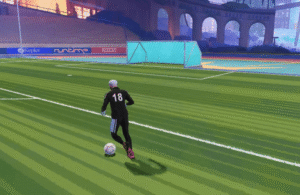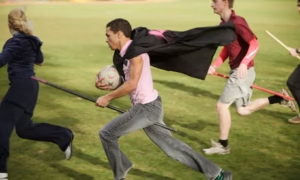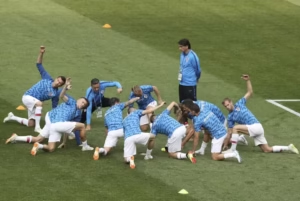Hey there, picture this: You’re a high school kid buried under a mountain of textbooks, staring at the clock as it ticks away another late night. Your brain’s fried, your back aches from hunching over that desk, and all you can think about is how you’d give anything for a breather. Now imagine lacing up your sneakers, stepping onto a field, and feeling that rush—the kind that clears your head and reminds you you’re alive. That’s sports for you. As someone who’s coached middle schoolers through muddy soccer fields and dodged errant basketballs in my backyard pickup games with my own kids, I’ve seen firsthand how picking the right game can turn overwhelmed students into confident, sharper versions of themselves. It’s not just about burning calories; it’s about building a toolkit for life. In this piece, we’ll dive into the top 10 sports that fit right into a student’s packed schedule, unpacking their key benefits with real stories, solid research, and a dash of that “aha” moment that makes you want to grab a ball and go.
Why Sports Matter for Students Right Now
In today’s world, where screens steal more hours than sleep does, sports aren’t a luxury—they’re a lifeline. They boost everything from your GPA to your mood, backed by studies like one from the Journal of Adolescent Health showing team players have lower anxiety levels heading into adulthood. Think of it as hitting the reset button on a glitchy laptop: suddenly, focus sharpens, energy surges, and that knot in your stomach loosens. For students juggling exams and extracurriculars, these activities weave in seamlessly, turning “I can’t” into “Watch me.”
Football: Building Teamwork That Lasts a Lifetime
Football isn’t just about dodging tackles—it’s a crash course in collaboration that spills over into group projects and beyond. This high-energy team sport gets your heart pumping while teaching you to read plays like a book, fostering quick decisions under pressure.
I remember my nephew, a shy freshman who barely spoke up in class, transforming after joining his school’s soccer team—wait, football in the global sense, but same vibe. By mid-season, he was leading study groups with the same grit he brought to the field. Key benefits? Enhanced cardiovascular health, sharper social bonds, and that unbreakable discipline from weekly drills.
Basketball: Agility on and off the Court
Dribble, shoot, repeat—that’s basketball’s mantra, and it wires your brain for speed and strategy in ways no app ever could. Perfect for students craving fast-paced fun, it sharpens reflexes while burning off that post-lunch slump.
One of my former players, a girl named Mia who juggled AP classes and part-time shifts, credited hoops with her straight-A streak. “It taught me to pivot,” she laughed, “whether it’s a defender or a tough equation.” Benefits include boosted hand-eye coordination, stress-busting endorphins, and improved time management from balancing practices with homework.
Pros and Cons of Basketball for Students
- Pros: Builds explosive energy for all-day stamina; promotes inclusivity with co-ed leagues.
- Cons: Higher injury risk from jumps—warm-ups are non-negotiable; requires gym access, which not all schools have.
Cricket: Patience and Precision in Every Ball
Cricket’s a slow-burn strategy game that rewards focus, much like cramming for finals. It hones patience as you wait for that perfect shot, mirroring the long-game mindset needed for academic success.
Growing up in a neighborhood where pickup cricket games were religion, I watched friends turn waiting-at-the-wicket skills into marathon study sessions. A study from the Aspen Institute echoes this, linking such sports to better concentration spans. Perks: Full-body conditioning, mental resilience, and cultural ties that make school feel like home.
Badminton: Quick Feet, Quicker Thinking
Smash that shuttlecock and watch your worries fly—badminton’s nimble pace is ideal for desk-bound students needing a low-impact outlet. It demands split-second reactions, translating to faster problem-solving in math or debates.
My daughter started playing during lockdown, and it was like flipping a switch on her fidgety energy. Suddenly, essays flowed easier. Research from the American Journal of Preventive Medicine highlights how these activities cut obesity risks by up to 1.8% in kids. Wins: Flexibility gains, low equipment costs, and a fun way to bond with siblings or classmates.
Swimming: The Ultimate Full-Body Reset
Dive in, and the world quiets—swimming’s rhythmic strokes melt away tension like nothing else. It’s a solo powerhouse that builds endurance without joint strain, perfect for students dodging heavier impacts.
I once knew a swimmer who aced her boards while training daily; the water became her thinking tank. Per the CDC, regular swimmers slash heart disease risks early on. Highlights: Total-body toning, anxiety reduction via mindful breathing, and year-round accessibility at local pools.
Athletics: Unleashing Your Inner Speed Demon
From sprints to jumps, athletics is variety on steroids—er, natural highs. It celebrates personal bests, teaching goal-setting that’s gold for report cards.
Coaching track events showed me kids who lagged in laps but led in leadership relays. The National Federation of High School Associations reports athletes score 40% higher on tests. Edges: Explosive power, self-motivation, and outdoor vibes that combat screen fatigue.
Table Tennis: Ping-Pong Your Way to Focus
Don’t knock it—table tennis packs a punch for precision and patience in a tiny space. Ideal for rainy days or cramped dorms, it sharpens hand-eye sync like laser tag for the brain.
A buddy’s son, glued to gadgets, found his groove here; grades up, screen time down. Studies link it to better motor skills and lower depression rates. Aces: Compact setup for home play, cognitive boosts, and that addictive rally flow.
Volleyball: Spike Your Social Game
Set, spike, celebrate—volleyball’s all about lift and land, building trust in every pass. It’s a team thrill that amps up communication, vital for presentations or peer reviews.
Watching a ragtag group gel into champs at a school tourney? Pure magic—and their essay scores mirrored the synergy. Benefits per Project Play: Stronger friendships, agility, and emotional stability.
Martial Arts: Discipline with a Kick
Strike a pose, channel your inner warrior—martial arts blend power and poise, instilling respect that radiates to teachers and tests. From karate to taekwondo, it’s controlled chaos.
My taekwondo days taught me more about focus than any lecture hall. A Women’s Sports Foundation report ties it to slashed suicide risks. Power moves: Core strength, self-defense confidence, and zen-like calm for crunch time.
Yoga: Breathe Easy, Achieve Deeply
Not your grandma’s stretch—yoga for students is mindful movement that grounds you amid chaos. Poses and breaths build flexibility inside out, easing exam jitters.
Introducing my class to downward dog? Skeptical faces turned serene by week’s end. Harvard research shows it rivals therapy for teen stress. Flows: Better sleep, emotional balance, and a portable practice for dorm life.
Comparing Team vs. Individual Sports: Which Fits Your Vibe?
Ever wonder if you’re a pack hunter or lone wolf on the field? Team sports like football or volleyball crank up the social dial, forging bonds that buffer against isolation—think lower dropout rates, per NFHS data. Individual ones, say swimming or athletics, spotlight personal growth, nailing self-reliance for solo study grinds. Both win for health, but teams edge in fun factor (who doesn’t love a post-win huddle?). Pick based on your crowd comfort—I’ve seen introverts thrive in solo lanes, extroverts shine in squads.
| Aspect | Team Sports | Individual Sports |
|---|---|---|
| Social Benefits | High: Builds lifelong networks | Moderate: Self-paced connections |
| Skill Focus | Collaboration & strategy | Precision & endurance |
| Best For | Outgoing students needing accountability | Independent types craving control |
| Academic Tie-In | Group project prep | Personal goal mastery |
Pros and Cons: Team Sports Edition
- Pros: Instant camaraderie combats loneliness; mirrors real-world teamwork for career prep.
- Cons: Scheduling clashes with clubs; potential for drama if egos flare—keep it light, folks.
Pros and Cons: Individual Sports Edition
- Pros: Flexible timing around exams; celebrates your unique wins without crowd noise.
- Cons: Lacks that team cheer—motivation must come from within; easy to skip without peers nudging.
People Also Ask: Real Questions from Curious Minds
Google’s got the scoop on what folks wonder most—here’s the lowdown, straight from the search ether, tailored for students like you.
What are the best sports for student health?
Hands down, swimming and yoga top the list for low-impact wins—they torch calories without wrecking joints, per CDC guidelines. Add basketball for cardio kicks, and you’ve got a recipe for dodging desk-dweller woes like obesity or burnout.
How do sports improve academic performance?
They sharpen your brain’s edge: Better blood flow means laser focus, as University of Bridgeport studies show athletes juggle loads with ease. Time management from practices? That’s your secret weapon against procrastination.
Are there sports that help with student stress?
Absolutely—yoga and table tennis melt tension like butter, releasing endorphins that rival a good playlist. A Journal of Pediatrics piece links them to higher GPAs via chill vibes.
Which sports are easiest for beginners in school?
Badminton or volleyball: Minimal gear, max fun, and quick to pick up. Start at school gyms—many offer free intros.
Where to Get Started: Navigational Tips for Aspiring Athletes
Jumping in? Scout your school’s PE roster first—most offer tryouts for these top picks. No luck? Community centers or apps like Meetup link you to local leagues. For gear, hit up Dick’s Sporting Goods for student discounts; start cheap with borrowed rackets or balls from friends.
Best Tools for Student Sports: Transactional Picks
Gear up smart: A $20 yoga mat from Amazon beats fancy studios. For tracking, apps like Strava log runs free. Need coaching? Platforms like CoachUp connect you affordably—my pick for personalized sessions under $50/hour.
FAQ: Your Burning Questions Answered
Do sports really boost grades?
Yep—NFHS data shows athletes snag higher GPAs thanks to discipline and better sleep. It’s that post-practice clarity kicking in.
Can introverted students enjoy team sports?
Totally. Start small; roles like setter in volleyball let you shine without spotlights. Bonds form naturally.
How much time should students dedicate weekly?
Aim for 3-5 hours—enough for gains without overload. Balance with study blocks; apps like Google Calendar help.
What if my school lacks these sports?
Freelance it: Join city rec leagues or online tutorials via YouTube. Persistence pays—I’ve seen garage gyms birth pros.
Are there scholarships for these?
Big time. Football and basketball lead, but swimming snags academic-athletic combos. Check Scholarship America.
Whew, we’ve covered the field—from sweaty sprints to serene stretches. Remember Mia’s pivot or my nephew’s glow-up? That’s the magic. So, what’s your move? Grab a friend, pick one from the top 10, and let it reshape your world. You’ve got this—now go play like tomorrow’s report card depends on it.




